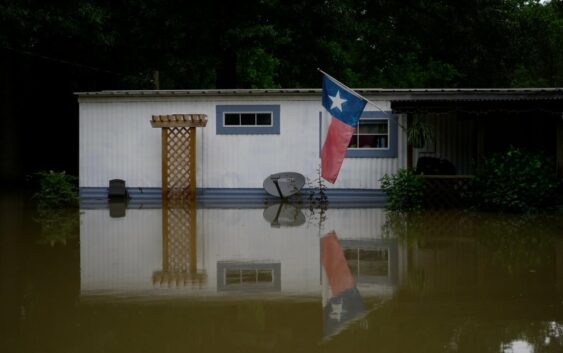- Report: Coastal flooding could threaten 1.4 million homes by midcentury
- Caught on camera | Tornado touches down in Missouri
- Carolina Hurricanes playoff tickets go on sale next week
- Storms kill 6 in the South and Midwest as forecasters warn of catastrophic rains, floods this week
- Weather Impact Alert: Cold front could trigger severe weather in Houston area this weekend | See timeline
See the scope of flooding in East Texas

Sign up for The Brief, The Texas Tribune’s daily newsletter that keeps readers up to speed on the most essential Texas news.
During the storm that hit a large area of Southeast Texas in late April and early May, a few places recorded an extreme amount of rainfall over several days. Some places got as much as over 10 inches in a day.
Matt Lanza, an energy meteorologist, said a few places recorded more than 5 inches of rain over the course of an hour. At one location north of Lake Livingston, 6 inches of rain in an hour was recorded on April 28.
“Texas gets a lot of rain, but that’s really getting up there,” he said.
But it wasn’t just the total amount of rain that contributed to so much flooding. What was exceptional was the river water levels.
The heavy rain just happened to fall upstream of places along the Trinity River and that water had to go through the entire tributary system. This, along with the amount of rain the rivers and the land has absorbed the past two months, made the river flooding in these areas worse, Lanza said.
The amount of excess water in Lake Livingston on May 3 was nearly 220,000 acre feet, which was the highest since 1995, according to numbers from Water Data for Texas. It was even higher in that location than during Hurricane Harvey, which dumped more than 50 inches of rain on parts of the Houston area.
The same was true of the water levels in Trinity River, according to Lanza. This excess water brought significant river flooding in large areas of East Texas.
Some records were broken, which shows the uniqueness of this storm.
But Lanza stresses, “Every storm is different.”
“Even if you didn’t flood this time, it doesn’t mean you are safe in the future,” he said.
We’ve got big things in store for you at The Texas Tribune Festival, happening Sept. 5–7 in downtown Austin. Join us for three days of big, bold conversations about politics, public policy and the day’s news.